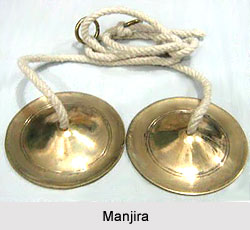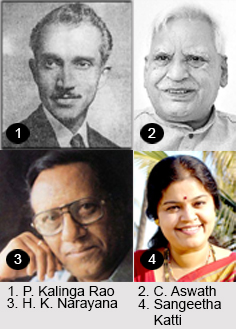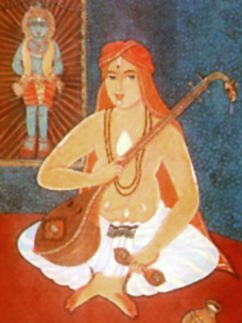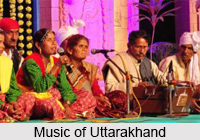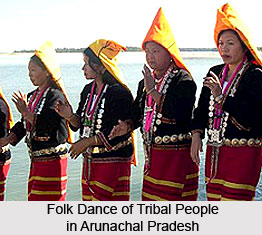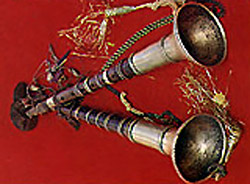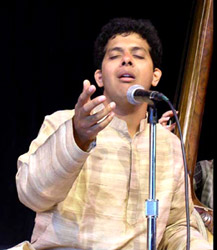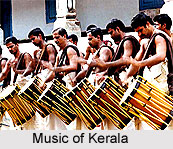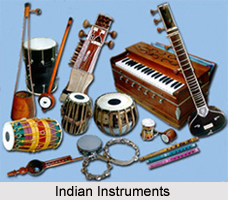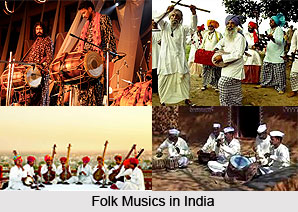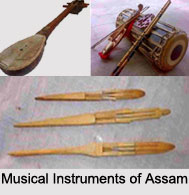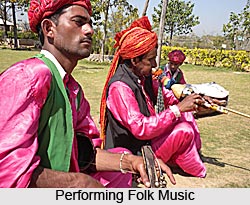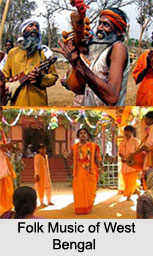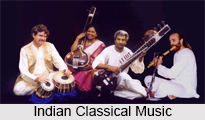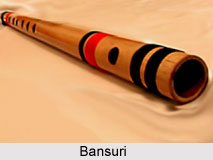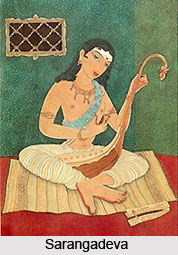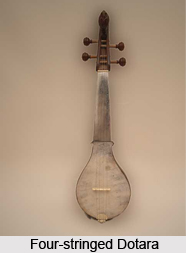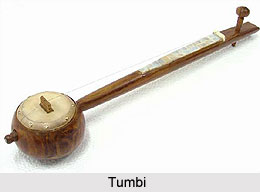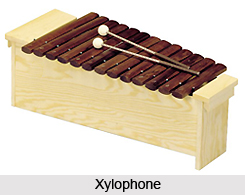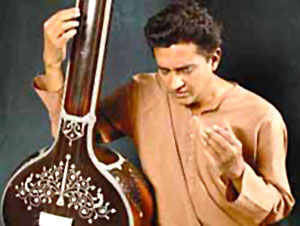 Origin and Development of Dhrupad has followed a long course down the roads of history. Dhrupad is a form of North Indian Classical Music which can be traced in almost all the defining eras, and also finds mention in the ancient texts of the legendary writers like Jayadeva or Sarangadeva. Over time, Dhrupad saw an amalgamation of other musical modes, spreading its influence even wider. Dhrupad is possibly the oldest surviving musical form of North India. If one would search for the roots of this form, one would definitely go back as far as the Sama Veda chants. In Vedic times two classes of music existed- the Samagana and the Sametara. The Samagana was a musical rendering of a Rig Vedic text and as such was held in high veneration and invested with divine, mystical and spiritual qualities. The Sametara was essentially the music of the commoners though it could be sung at the time of Yajna (religious sacrifice). It was sung in the eulogy of kings, feudal men and Yajamanas.
Origin and Development of Dhrupad has followed a long course down the roads of history. Dhrupad is a form of North Indian Classical Music which can be traced in almost all the defining eras, and also finds mention in the ancient texts of the legendary writers like Jayadeva or Sarangadeva. Over time, Dhrupad saw an amalgamation of other musical modes, spreading its influence even wider. Dhrupad is possibly the oldest surviving musical form of North India. If one would search for the roots of this form, one would definitely go back as far as the Sama Veda chants. In Vedic times two classes of music existed- the Samagana and the Sametara. The Samagana was a musical rendering of a Rig Vedic text and as such was held in high veneration and invested with divine, mystical and spiritual qualities. The Sametara was essentially the music of the commoners though it could be sung at the time of Yajna (religious sacrifice). It was sung in the eulogy of kings, feudal men and Yajamanas.
In the course of time Samagana became obsolete while the Sametara gained in popularity and respectability. With the march of time even the Sametara at a later time became terse and lost its wider appeal. To fill the void another form of music called Gandharva came into being. There is extensive mention of it in Natyashastra. Apart from this, a non-Gandharvic form of music also existed that time. This was in the form of Dhruvas (the stage songs). By about the 6th century the non-Gandharvic forms of music established themselves rather well. Other non-Gandharvic form of music now emerged in the form of Prabandha. The Prabandha mode comprised of four sections - the opening section, udgraha, the exposition section, melapaka, a preset form, dhruva and the concluding abhoga. Of these, the dhruva mode is alleged to have been provided by the basis for the present day dhrupad.
By about the 15th century when the Prabandhas became far too stereotyped and as such lost their popular appeal, a simplified derivation of Prabandhas emerged in the form of Dhrupad. Bharata`s Natyashastra makes reference of Dhruva as the song sung before the commencement of a play, whereas 11th century music texts, such as Sangeet Makarand, and 14th century texts like Raagatarangini, discuss both the Dhruva and the Dhruva-Prabandha forms. Prabandha and its branch, Dhrupad, were soon adopted as part of the devotional music sung in temples.
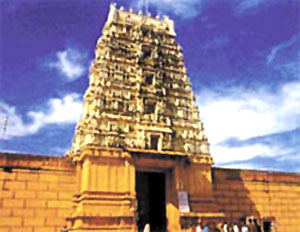
Anibaddha and Nibaddha
Two well-known and extensively practiced modes of singing rampant in Indian Music - the anibaddha and nibaddha - also contributed appreciably to the evolution of dhrupad. The anibaddha, or the open form, calls for the exposition of a Raaga without rhythmic accompaniments. In other words, it came to be the equivalent of the expansive alaap sung prior to the composition. The nibaddha, or the closed form, comprises of a rhythm-bound composition in a Raaga, which embarks, develops and concludes within the outline of a fixed rhythm pulse. The nibaddha came to be the equivalent of the song-text or the Dhrupad. All components in a dhrupad, excluding the alaap, function and develop inside a stable (dhruva) rhythmic frame. Attention is focussed on the unfolding of the numerous components in the song-text to rhythmic accompaniment. One of the chief strengths of the dhrupad is that, it gives importance both to the free exposition and development of the Raaga through the initial alaap, as well as to the rhythmically framed composition.
Dhrupad and Devotion
Temples of Vrindavan, Nathdwara, Puri and Dwaraka, use a simple Dhrupadi mode to this day, as part of their devotionals, with a elementary rhythmic accompaniment provided by cymbals and hand-bells. It is asserted that dhrupad was sung in the temples, and that these were invocations or praises, addressed to divinities. The song-offering was thus a mode of admiration. The singer reputedly sang these invocations directly facing the deity. It is believed that the association between dhrupad and ritual worship was amplified when the Bhakti Movement gathered momentum during the medieval period. The relationship between dhrupad and worship thus has a long history, dating back at least seven centuries. The survivor of this hymnic form is the Haveli Dhrupad, which recourses to a highly abbreviated Alaap.
When the dhrupad form migrated to the royal courts, between the 14th and 16th centuries, its nature and content underwent several alterations. Simplicity yielded to sophistication and devotional feelings gave way to the romantic and, at times, to amorous ones, given that the music had to satisfy and amuse regal patrons. Group singing of the dhrupad also yielded to individual style of singing, where display of skill was necessitated. Such changes, brought about by a fusing of historical, social and cultural factors, contributed to the emergence of the dhrupad as a classical form. Also, the language of composition changed from Sanskrit to Brijbhasha, and also to Awadhi language, between the 12th and 16th centuries. Most of the compositions sung to this day are drawn from Brij compositions, composed during the 15th and 16th centuries, and the times that followed.
